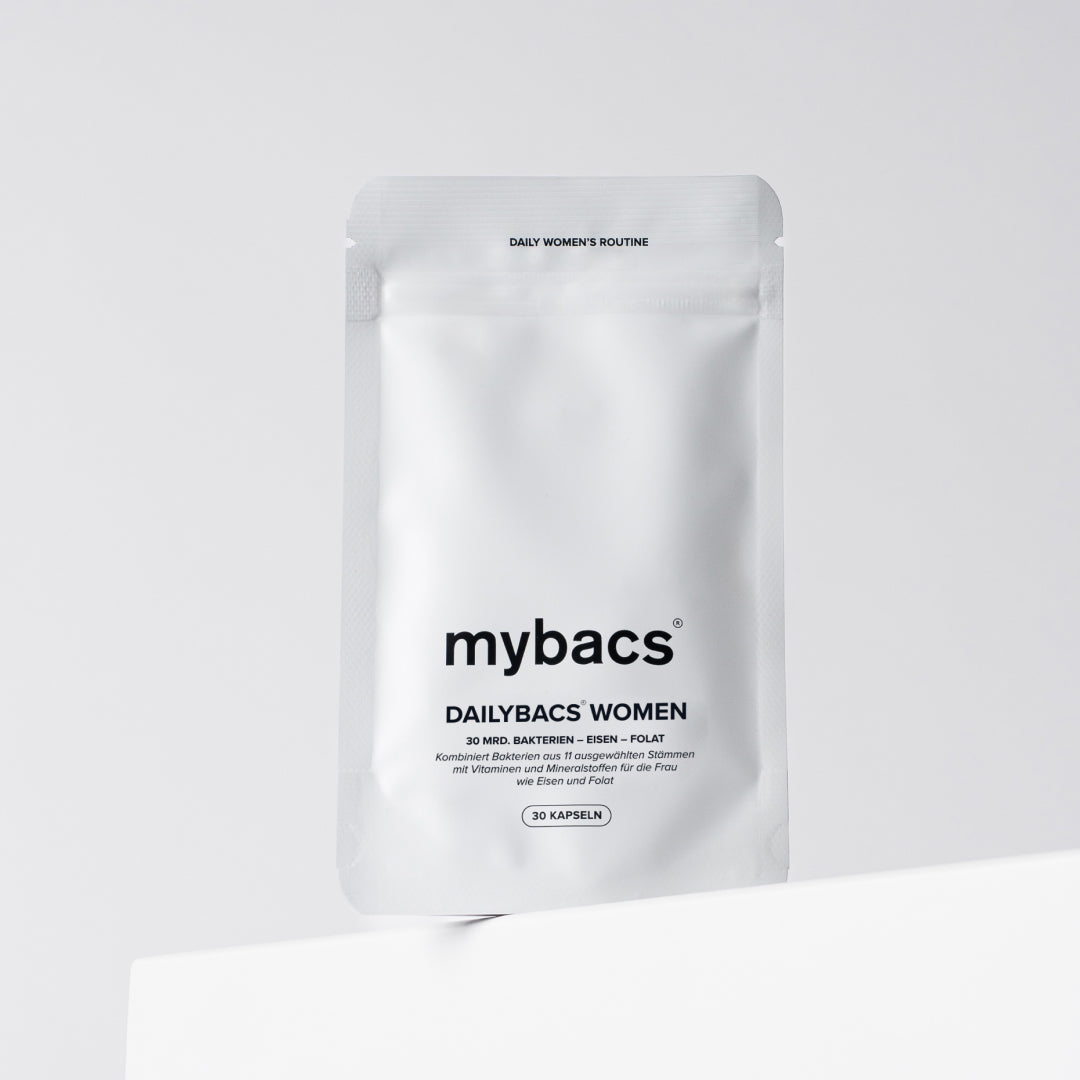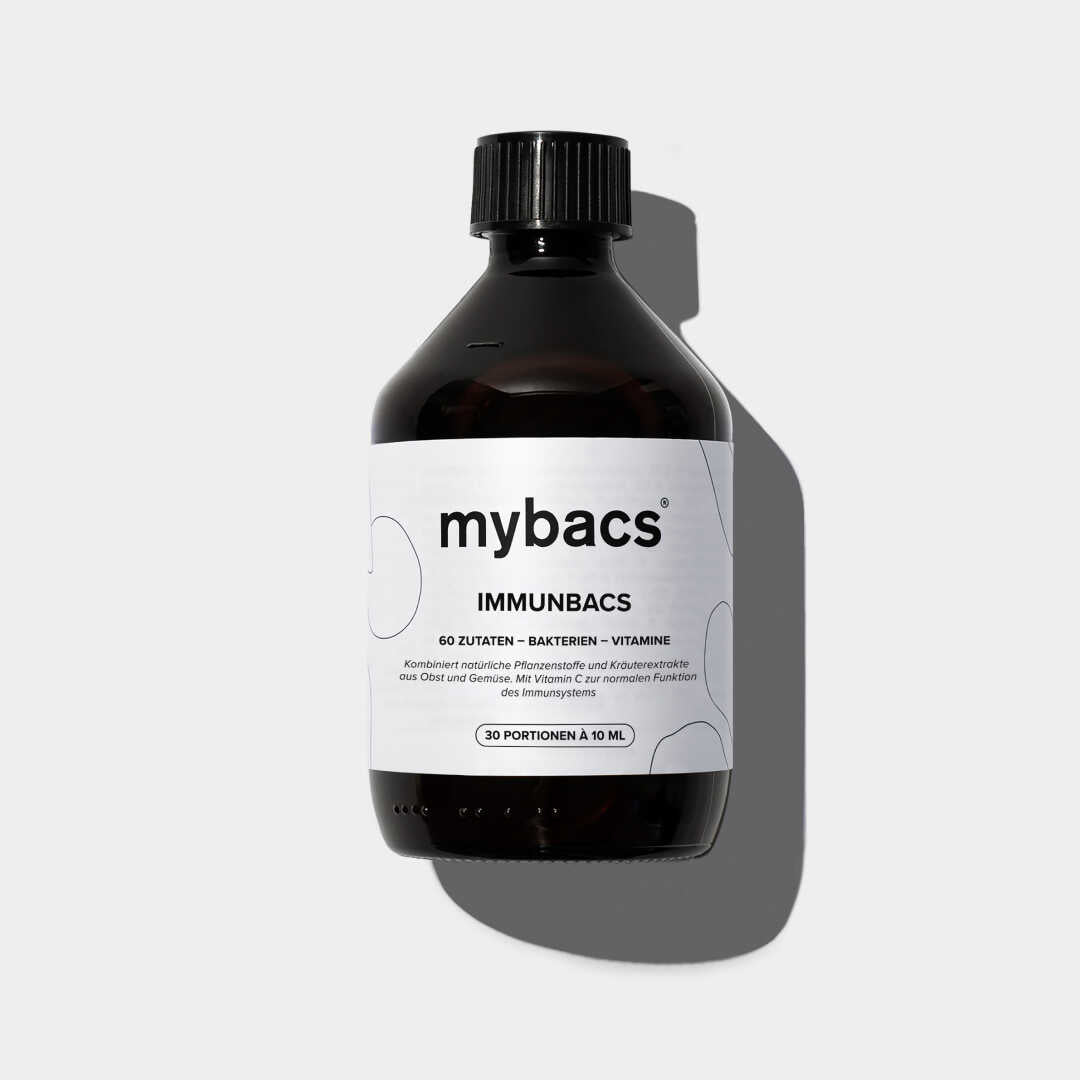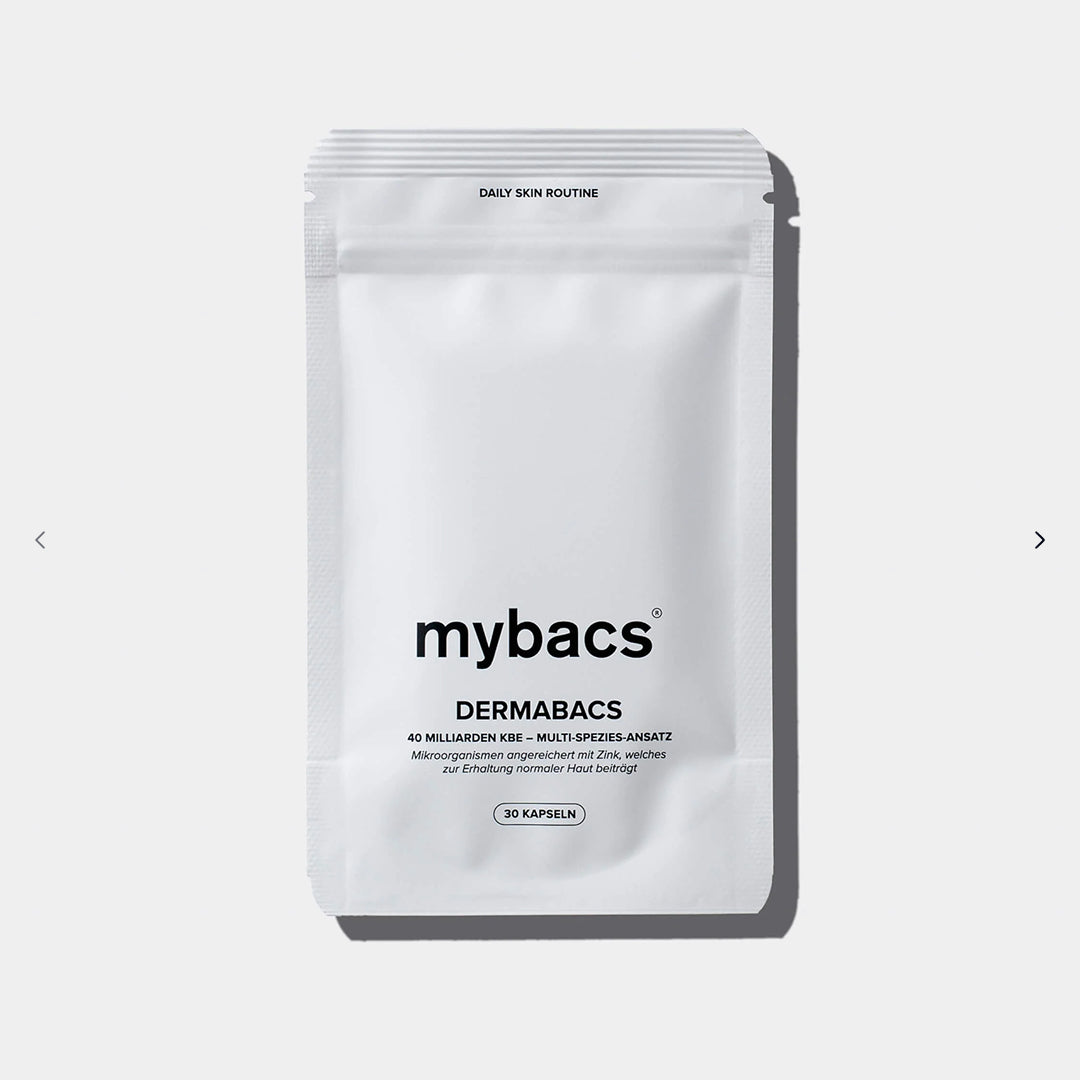In our blog posts and on our website, we often talk about various bacterial strains that are crucial for your intestinal health. To shed some light on the “bacterial darkness,” we will explain what lies behind the three most important bacterial strains in our basic products.
So, may we introduce:
First of all, general - bifidobacteria
Bifidobacteria are among the most common probiotic bacteria found in the human body - they make up more than 80% of the microorganisms in your intestines! Bifidobacteria are lactic acid bacteria that normally live in the intestines and vagina, but can also be absorbed into the body by taking probiotic foods or probiotics. Once in the intestines, they can settle there and multiply. Bifidobacteria help the body to break down food and absorb nutrients. They also have another important function: they can help prevent "bad" bacteria from penetrating the intestinal wall into the body, thus supporting the immune system.
Bifidobacteria are real miracle weapons when it comes to killing “bad” bacteria in the gastrointestinal tract or in the urinary tract. So you can imagine it like this: During or after taking antibiotics, “good” bacteria in your intestines also die. To prevent the “bad” bacteria from gaining the upper hand, the bifidobacteria come into play because they can prevent pathogenic bacteria from multiplying. In doing so, they bring your intestinal flora back into balance.
These bacteria can help treat diarrhea, constipation and flatulence. Bifidobacteria also strengthen the body's immune system through a variety of mechanisms. For a healthy body and good well-being, it is therefore important to have sufficient bifidobacteria as part of the intestinal flora.
Bifidobacterium Infantis
Bifidobacterium Infantis is one of the most common microorganisms in the body of breastfed infants, as this bacterium is passed on to the newborn primarily via breast milk.
Like other bifidobacteria, Bifidobacterium Infantis produces short-chain fatty acids in the intestine. This includes acetic acid, which ensures that the cells in your intestinal mucosa are nourished. This also has another crucial advantage: it fends off invading pathogens such as yeast and various fungi that can lead to various diseases and infections. Acetic acid is particularly important for babies because it serves as a great source of energy for them.
When children are born, they are born with open spaces between the intestinal cells. This provides a large surface area for invading toxins and other harmful bacteria. Bifidobacterium Infantis has the important task of sending signals to the cells that line the intestine, stimulating them to produce proteins to close the gaps between the individual cells in the intestinal wall. The following applies: the denser the intestinal wall, the less susceptible the child is to disease.
This bacterial strain also produces folate - also known as vitamin B9. Folate is responsible for the production of red blood cells, which in turn are responsible for transporting oxygen in the body.
Now you're probably thinking: That sounds like Bifidobacterium Infantis is only important for newborns, right? No, it's not. This strain of bacteria also supports digestion and general intestinal function in adulthood. Studies show that these bacteria help with digestive problems such as diarrhea, constipation and flatulence, and can also relieve symptoms of irritable bowel syndrome .
Where are bifidobacteria found?
- yogurt
- kefir
- Cheese
- sauerkraut
- pickles
- your Dailybacs®
And now to the Lactobacilli
Lactobacilli are bacteria that, as the name suggests, produce the enzyme lactase. They are found in the intestines, on the skin and in women in the vagina and support normal intestinal function, have positive effects on the intestinal mucosa and also protect against infectious diseases. Lactobacilli are adapted to survive under acidic and alkaline conditions in your body. They attach themselves to the intestinal wall and can colonize it - this has long-term positive effects on your intestinal health.
This bacterium is increasingly used to treat gastrointestinal complaints, vaginal infections such as cystitis and allergic diseases.
Lactobacilli are real all-rounders because they have antimicrobial, antiviral, immunomodulating and immunostimulating properties. They also have anti-inflammatory, digestive and help against diarrhea. After taking lactobacilli, they can normalize the composition of the intestinal flora and thus improve your well-being. At the same time, they have a positive effect on the intestinal mucosa, stimulate the production of mucus in the intestine and strengthen the barrier function of the epithelium* . But that's not all: Lactobacilli stimulate your intestines to move more and thus counteract constipation, support the immune system and at the same time inhibit the growth of pathogenic microorganisms and viruses. Aren't these little helpers in your intestines impressive?
Lactobacillus Rhamnosus
Lactobacillus Rhamnosus is also abbreviated to Lactobacillus GG after its discoverers Sherwood Gorbach and Barry Golding . As the name suggests, this bacillus belongs to the genus of lactic acid bacteria. Due to its ability to ferment lactose into lactic acid, it leads to an acidification of its environment.
Like other Lactobacilli, Lactobacillus Rhamnosus is found mainly in the human gastrointestinal tract, urinary tract and genital tract. However, studies have shown that Lactobacillus GG is not a permanent resident of the gastrointestinal tract. It has only been detected temporarily in the digestive organs of some healthy volunteers.
Lactobacillus Rhamnosus has a number of positive effects on the human body, including the production of antimicrobial substances that fight pathogenic germs such as salmonella. They also promote a positive composition of the bacterial flora in the intestines, mouth and genital tract. They have anti-inflammatory properties and can have a positive effect on the immune system. And last but not least, they can contribute positively to the barrier function of the intestines and the protection of the mucous membranes.
Lactobacillus GG can have very positive effects on the composition of the human intestinal flora and thus counteract an imbalance between useful - "good" - and pathogenic - "bad" - bacteria in the intestine. If your intestinal flora becomes unbalanced, this can lead to digestive dysfunction and infections in the gastrointestinal tract, as well as obesity.
Last but not least - the Lactobacillus Plantarum
In contrast to Lactobacillus GG, Lactobacillus Plantarum is a permanent resident of your body. To be precise, it is found in the gastrointestinal tract and in the saliva of healthy people. It also belongs to the family of lactic acid bacteria, but has one of the largest genomes of its genus.
Like other lactic acid bacteria, Lactobacillus Plantarum has numerous positive effects on human health. These include the production of antimicrobial substances that fight against pathogenic germs. They have anti-inflammatory properties, have a positive effect on the immune system, improve the barrier function of the mucous membranes and thus have a positive effect on the bacterial flora in the intestine. They are also responsible for acidifying their environment through the production of lactic acid and can break down bile acid.
Lactobacillus Plantarum normally colonizes the gastrointestinal tract of healthy people and can have a positive effect on the composition of the intestinal flora. Like Lactobacillus Rhamnosus, it can counteract an imbalance between bad and positive bacteria in the intestine.
In medicine, Lactobacillus Plantarum is used to treat lipid metabolism disorders, obesity, irritable bowel syndrome, chronic inflammatory bowel diseases and mental illnesses.
Where are Lactobacillus Rhamnosus and Lactobacillus Plantarum contained?
- fermented foods
- sauerkraut and pickles
- buttermilk, yogurt, milk
- your Dailybacs ®
* Epithelium : The epithelium or covering tissue is a complex of flat, specialized cell groups without significant intercellular substance. They always occupy the body's interfaces, i.e. they are located on the surface of the skin or on the inside of hollow organs; https://www.lecturio.de/magazin/histologie-epithelien/






